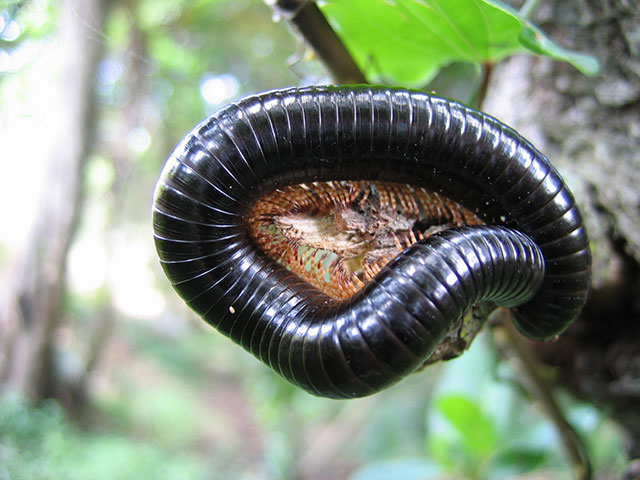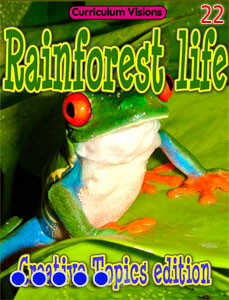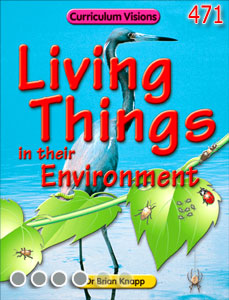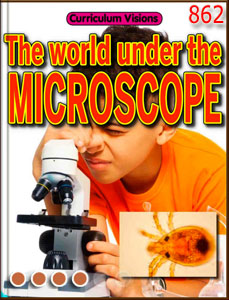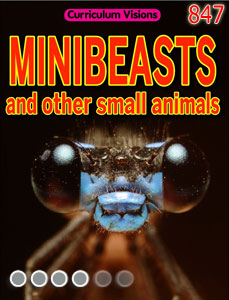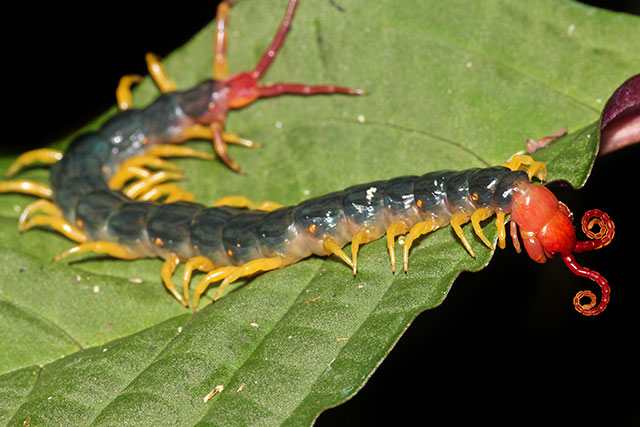It is not true that centipedes have a hundred legs and millipedes have a thousand as some people think. One way of telling a centipede from a millipede is that a centipede has one pair of legs on each part of its concertina body and a millipede has two pairs. Centipedes also have flattened bodies and tend to be more active if disturbed during the day. In fact most centipedes will quickly run away. Millipedes have a more cylindrically shaped body and curl up during the day. At night they move slowly. The centipede is a carnivore. Its first pair of legs are claw shaped and give out a poison when the centipede attacks. Centipedes feed on insects, spiders and small earthworms. Large centipedes which live in tropical countries even feed on lizards. The millipede feeds on all kinds of vegetable material. When a millipede is attacked it produces poison on the sides of its body. A large tropical millipede squirts the poison into the air where it makes a fine mist. Both the centipede and millipede can lose moisture through their skins. This is why they hide away in damp places in the day. They come out of their hiding places at night after the dew has formed and the air close to the ground has become moist.
